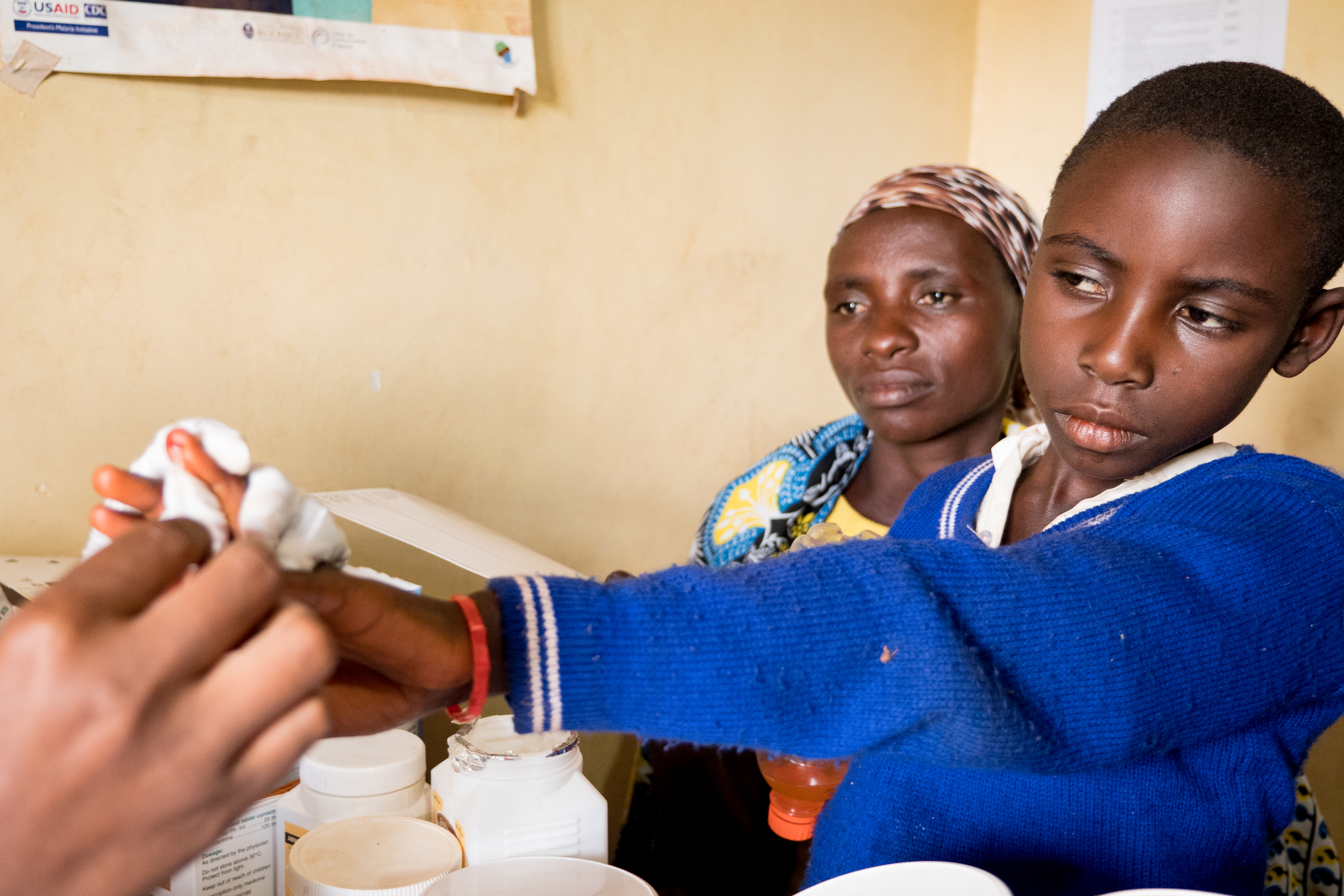Examining the effectiveness of private sector approaches to the management of childhood illnesses
A new SHOPS Plus brief addresses a gap in the availability of summarized evidence on private sector models that accelerate the reduction of child mortality.
“Even though significant investments have been made to improve child health globally, there is still a lack of summarized evidence about what works and doesn’t work in reducing child morbidity and mortality,” explains Anna Wadsworth, country program manager for SHOPS Plus and co-author of Case Management of Childhood Illnesses in the Private Health Sector. “In particular, there appeared to be a dearth of information about the private health sector’s role in delivering quality child health services. We aimed to explore what evidence was available.”
SHOPS Plus reviewed 126 published and gray literature resources to gather evidence of the private sector’s experience and role in the management of childhood illness—including vertical programs addressing malaria, diarrhea, or pneumonia, as well as integrated approaches seeking to address several diseases. Specifically, the team looked at which models might be most effective, and which interventions show promise in delivering high quality services and ensuring program sustainability.

Several studies and projects profiled confirmed that the private health sector, particularly at the community level, is often the first place caregivers go when children start to exhibit malaria symptoms—meaning private medical vendors and other community-based drug dispensing outlets are a critical source of care for children. The review found that access to malaria rapid diagnostic tests in the private sector can improve case management of fever. However, it remains unclear if successful pilot interventions can be scaled up or sustained.
“Of particular note, we found that when projects demonstrated success in one country, geographic setting, or scale the factors that led to that success did not necessarily lead to similar outcomes in other settings, scales of delivery, or for other disease areas” explains James White, lead author and clinical advisor for SHOPS Plus.
When it came to diarrhea case management, the review found that there is a risk that private providers who received training on the efficacy and appropriateness of oral rehydration solution and zinc are not always likely to demonstrate improved prescribing behavior. This means future programs should emphasize both training of providers as well as measures to highlight the dangers of prescribing incorrect or unnecessary treatments for childhood diarrhea.

Importantly, the review found that expanded provider knowledge across disease areas, including diarrhea, malaria, and pneumonia, can improve private providers diagnostic abilities, reduce unnecessary use of antimalarials, and improve case management and referral. Because malnutrition often increases the intensity and frequency of childhood illnesses, it is critical that integrated child health service models are mindful of nutritional status, particularly undernutrition and stunting.
In addition to the specific health area recommendations noted in the brief, one substantial conclusion was the need for additional research, specifically in terms of measuring impact and long-term sustainability of programs over time.
“Few of the interventions we reviewed looked at the implementation experience and its’ impacts beyond two to three years,” explains White. “There is a noticeable lack of information about the sustainability and success of interventions once the initial implementation period is over and donor funding is no longer being received. There is a great need to design longer-term evaluations of these interventions as they are brought to scale and replicated in other settings. ”
The findings from the review are now being used as part of the Child Health and Nutrition Research Initiative exercise, which will help to identify research priorities to advance the effective prevention, management, and treatment of childhood illnesses through private sector approaches or partnerships.
Read about these findings and more in the full brief. Stay tuned for more information about our webinar on the Child Health and Nutrition Research Initiative exercise to take place in late fall.